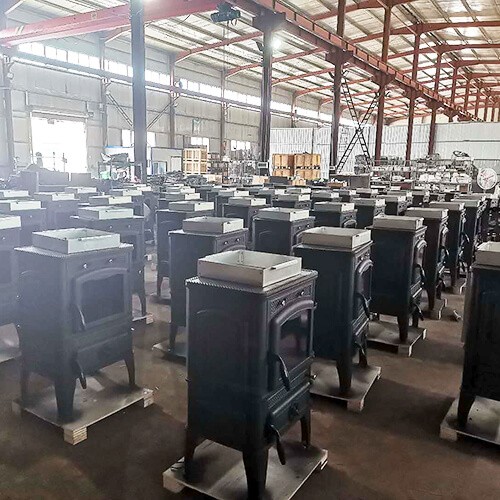
Can wood stoves really help save energy?
Absolutely! Not surprisingly, heating with wood is much cheaper than relying on electricity, oil, or natural gas. But what exactly are the energy and cost savings? Simply using wood stoves to heat the house can reduce energy costs by 20% to 40%.
From one perspective, home heating that only costs US$100 a month can save US$20 to US$40 per month by switching to a wood-fired home heating system. Imagine how much money this means saving over time.
How efficient is the woodstove?
If you think that all wood stoves today have the same performance as those used by grandparents decades ago, please think again. The new wood stove has extremely low emissions and is highly energy efficient (almost twice as much as traditional fireplaces!). The EPA-certified model has an efficiency of at least 60%, and some models have an efficiency of 80%, which is a significant improvement compared to the low-tech, uncertified models of the past few decades (usually 50% or lower). Choosing an EPA-certified stove will undoubtedly know that your stove is environmentally friendly and energy-saving.
But wait, does burning wood cause CO2 emissions?
Not all firewood stoves are the same. There is no comparability between stoves that have used wood for decades and new stoves manufactured by EPA performance standards. Older wood stoves require a constant supply of fresh wood to heat the room and generate up to 70% of the air pollution. Therefore, they are notorious for smoking indoors and outdoors.
Thanks to the EPA’s new emission standards, the era of inefficient and smoking wood stoves has passed. Since the late 1980s, both catalyzed and non-catalyzed wood-burning stoves have been manufactured by the EPA’s mandatory emission limits of 4.1 and 7.5 grams of smoke per hour (we will introduce the difference between catalytic and non-catalytic stoves). The emission standard sets a much-needed upper limit for the harmful CO2 and small particle emissions of wood-burning stoves, which challenges stove manufacturers to create more advanced wood-burning technologies to meet the requirements of the standard.
Is wood a sustainable fuel resource?
Wood has another advantage in fossil fuels-it is a completely renewable resource. The supply of fossil fuels like natural gas and coal is absolutely limited. In other words, once we go out, we go out. Moreover, if we continue to consume fossil fuels at the current rate, we may be depleted much faster than we thought (some sources estimate that by 2052, our oil reserves will be exhausted!). Wood is a renewable resource, which means that as long as there are sustainable forestry practices, wood will never be exhausted. Fortunately, the development of sustainable forestry in the United States is unprecedentedly high. There are more trees planted on American soil than a century ago. This is largely due to the requirement of the US Forest Service that the trees planted by wood harvesters need to be planted. More trees than harvested. Therefore, even if you plan to use the logs you purchased to fuel your stove, you can ensure that your home heating method will not contribute to global warming or dangerous deforestation.
How to measure the heat capacity of the stove?
The heat capacity of wood-burning stoves is measured in British thermal units (Btu) or British thermal units. Generally, a larger Btu rating indicates a larger space where the cooktop can provide heat. For example, a stove with a rated power of 42,000 can provide enough heat for a 1,300-square-foot house, while a 60,000 Btu model can better provide heat for a 2,000-square-foot house. Discuss the heating needs of your home with your wood stove manufacturer and installation technician to ensure you choose the ideal stove for your space.
